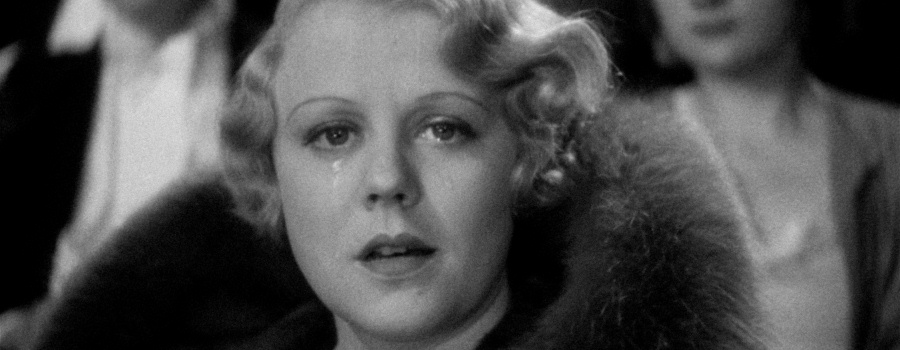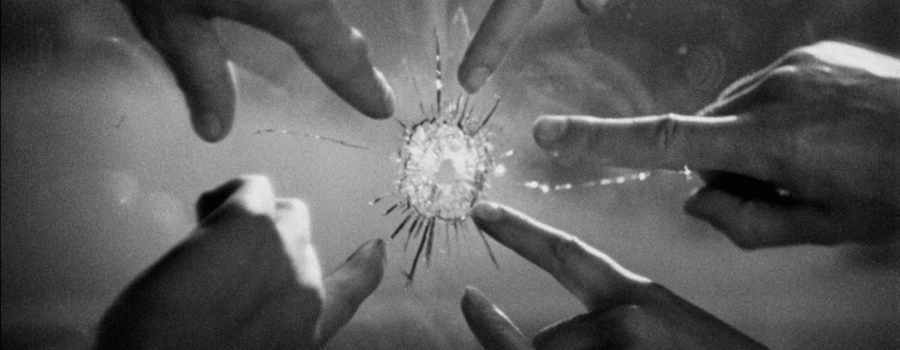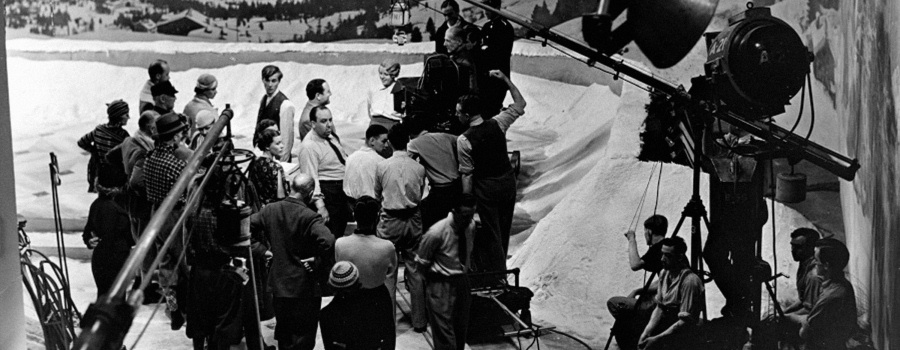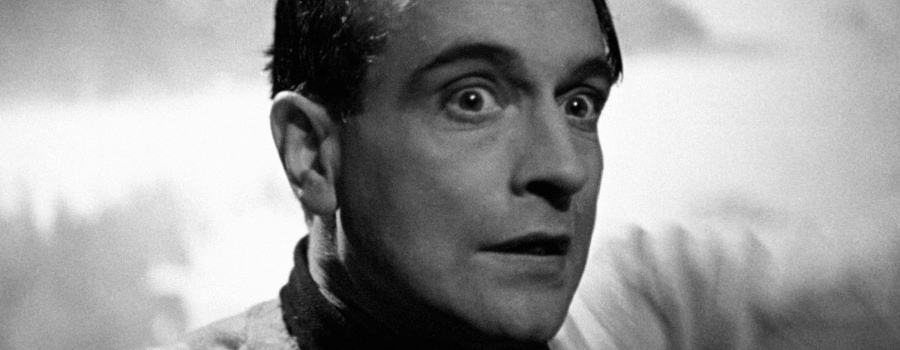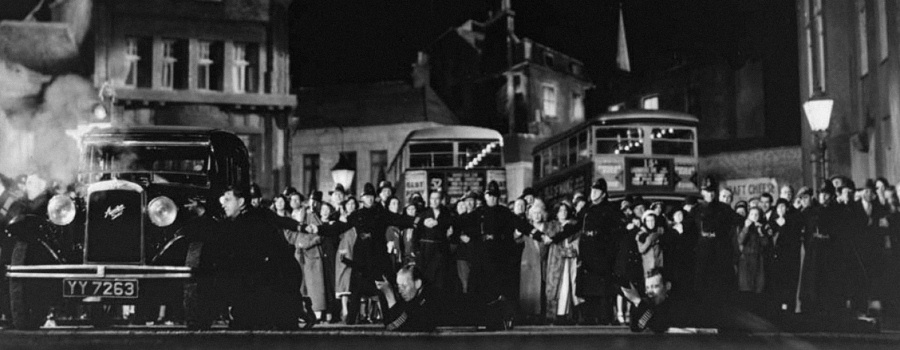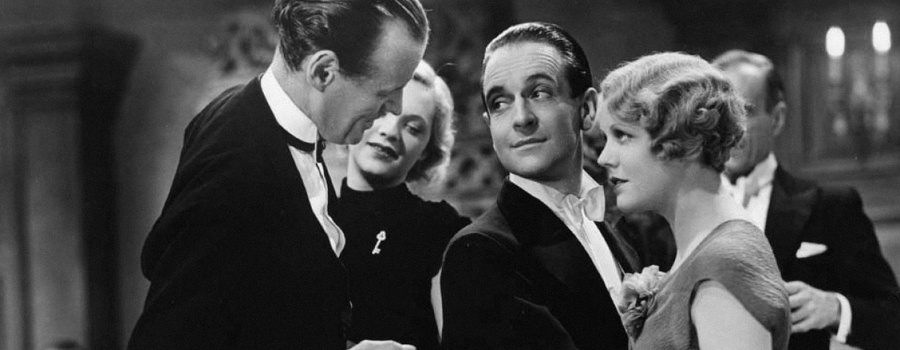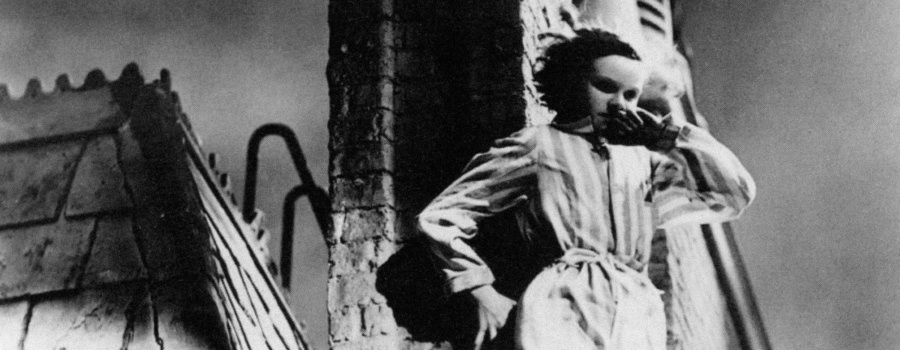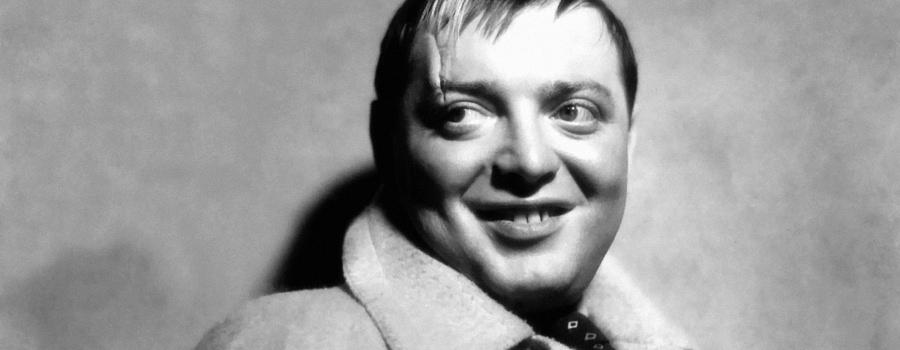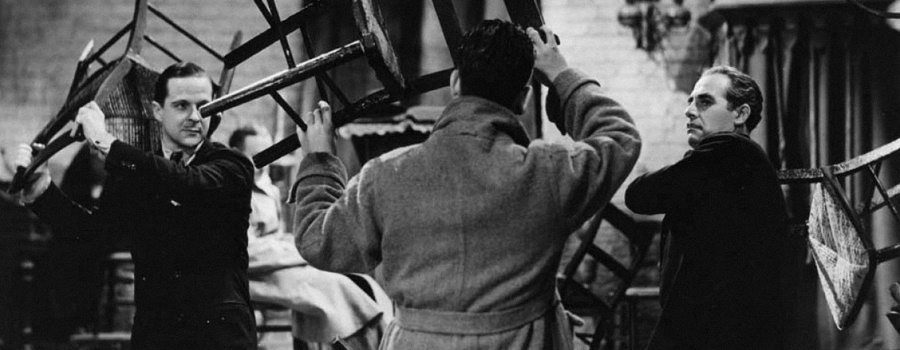The Man Who Knew Too Much (1934)
| Public Enemy No. 1 of all the World. | |
/0007.jpg) | |
| Alfred Hitchcock | |
| Michael Balcon (uncredited) | |
| Charles Bennett D.B. Wyndham-Lewis | |
| Leslie Banks Edna Best Peter Lorre Nova Pilbeam Frank Vosper | |
| Arthur Benjamin | |
| Curt Courant | |
| Hugh Stewart | |
| 75 minutes | |
| black & white | |
| mono (British Acoustic Film Full Range Recording System) | |
| 1.37:1 | |
| Gaumont British Picture Corporation | |
| General Film Distributors (UK) | |
| Gaumont British Picture Corporation of America (USA) | |
| DVD & Blu-ray | |
Synopsis
Bob and Jill Lawrence are on a winter sports holiday with their teenage daughter Betty. When their friend Louis Bernard is shot whilst dancing with Jill, he tells Bob of an assassination about to take place in London. Fearing that their plot will be revealed, the assassins kidnap Betty in order to keep the Lawrence's quiet. Bob and Jill return to London and take matters into their own hands. (© IMDB)
Production
Background
After screenwriter Charles Bennett signed to British International Pictures (BIP) in September 1931, he collaborated with Alfred Hitchcock on preparing a scenario based on the "Bulldog Drummond" series of books, written by Herman Cyril McNeile.[1] In particular, Bennett was able to draw upon his personal experiences working for the British Intelligence Service during the First World War.[2] However, studio head John Maxwell became increasingly concerned that "Bulldog Drummond's Baby" would be too costly to film and the project was shelved.
As the film's director, Hitch joined me and we worked together on the development. The tale was pure suspense. Bulldog, in Switzerland with his wife, inadvertently learns that a terrible assassination will shortly take place in London. But the 'heavies' know that he knows, with the result that Drummond's five-year-old daughter is kidnapped. She will die unless Drummond holds his tongue. Meanwhile, the story stalks relentlessly toward the assassination - at a certain time and place.
— Charles Bennett[3]
In "The Alfred Hitchcock Story", Ken Mogg suggests that the story they developed — which saw the kidnapping of Drummond's young child — may well have been inspired by the infamous Lindbergh baby kidnapping of March 1932.[4][5]
Pre-Production
When Michael Balcon signed Hitchcock to Gaumont-British in 1933, they acquired "Bulldog Drummond's Baby" from BIP.[6] As they were unable to also secure the rights to the "Bulldog Drummond" books, Hitchcock instead began working with Bennett on a new version of the scenario, jettisoning the Bulldog character.[7][8]
Screenplay
When he settled into his new office at Gaumont's Lime Grove studio, as well as Bennett, Hitchcock was reunited with two other former colleagues — Ivor Montagu, who became Hitchcock's supervisory producer, and Angus MacPhail, who was in charge of Gaumont's story department. Along with Alma, they all began contributing to the rewrite of the "Bulldog Drummond" script, often meeting up after work at 153 Cromwell Road.[9]
We would sit around in [Hitchcock's] flat. Sometimes Alma Hitchcock would be there; sometimes the scenario editor Angus MacPhail, my old schoolmate ... The unfolding story was elaborated with suggestions from all of us. Everything was always welcome, if not always agreed. Like anyone else, Hitch would sometimes reject an idea when it was put forward, sleep on it, and return with it next morning as his own; which by then it undoubtedly was, since it could only be incorporated when adjusted in his own head to make it fit.
— Ivor Montagu[10]
Needing a new title for the script, Hitchcock borrowed "The Man Who Knew Too Much" from a G.K. Chesterton book to which he owned the film rights.[11]
The Man Who Knew Too Much saw the first proper introduction of a "MacGuffin" — a storytelling device often attributed to MacPhail which appears in many of Hitchcock's subsequent films — in the guise of the message about the planned assassination of a foreign dignitary in London.
As the script discussions progressed over the winter months, Hitchcock began to plan two climatic set-pieces for the film — the assassination attempt at the Albert Hall during an orchestral performance, and a shoot-out between the police and the kidnappers based on the notorious 1911 "Siege of Sidney Street" gunfight that took place in Stepney, London.[12]
By the time it was completed in early 1934, satirist D.B. Wyndham-Lewis, actor and playwright Emlyn Williams, playwright Edwin Greenwood, and actor-writer A.R. Rawlinson had also made contributions to the final script. Along the way, several scenes were considered and discarded, or altered for the final film, including:
- an opening sequence in St. Moritz in which an ice skater traces a sequence of numbers on a skating rink that represent a secret code[13]
- a scene originally set in a barbershop was changed to a dentist after Mervyn LeRoy's film I Am a Fugitive from a Chain Gang had a similar scene set in a barbershop[14]
- at one point during script development, it was planned for the villains to hypnotise the mother (Jill Lawrence) and have her carry out the Albert Hall assassination whilst in a trance[14]
In a 1984 interview with Patrick McGilligan, Bennett sought to downplay the contribution of the other credited writers — in particular that of D.B. Wyndham-Lewis — however, most Hitchcock scholars seem to agree with Montagu's recollection that Hitchcock's 1934-1936 films were a collaborative effort.[15]
Casting
French actor Pierre Fresnay was hired after the Hitchcocks saw him perform on stage in London.[16]
Fourteen-year-old Nova Pilbeam was contracted to Gaumont and had just starred in Little Friend, which had broken British box-office records. Hitchcock later said of her, "Even at that time, she had the intelligence of a fully grown woman. She had plenty of confidence and ideas of her own."[17]
Arguably the most memorable role in the film was played by Peter Lorre. A star of the German stage and cinema, Hungarian-born Lorre had fled Hitler's Berlin in 1933 and ended up in Paris. In September 1933, Ivor Montagu, Michael Balcon and Sidney Bernstein joined forces to bring Lorre across the Channel to London. Initially cast as the assassin Ramon, Hitchcock soon warmed to Lorre and offered him the bigger role of Abbott.[18]
Principal Photography
Hitchcock's first film for Gaumont-British began shooting on May 29th and wrapped on August 2nd 1934. Free from the studio interference he had experienced at British International Pictures, under John Maxwell and Walter Mycroft, filming on The Man Who Knew Too Much proceeded smoothly.[19] Editor Hugh Stewart later recalled that Hitchcock walked onto the set on the first day of shooting, banged the script down on a table and announced "Another picture in the bag!"[20]
Although the film featured some second-unit establishing footage shot abroad, most of the sets were constructed at Gaumont's Lime Grove Studios in Shepherds Bush.
For the Albert Hall sequence, Hitchcock resorted to the Schüfftan process. Photographs of the interior of the Hall were blown up into large transparencies onto which the Italian-born artist Fortunino Matania painted the audience. During periods when the Albert Hall was empty, the crew returned and used the transparencies and the Schüfftan process to insert a small number of actors amongst the painted audience to give the illusion that hundreds of extras had been used in the scenes.[21]
The Hitchcock Cameo
It seems highly likely that Hitchcock had a cameo in the film, possibly along with Charles Bennett. A figure resembling the director and wearing a hat with a dark band is seen walking across a street, accompanied by a second man, whilst a bus passes in the opposite direction. This is strikingly similar to Hitchcock's known cameo in his next film, The 39 Steps (1935).[22]
Post-Production
Concerns about the handling of the final shoot-out sequence and its similarity to the Sidney Street Siege necessitated the filming of a short sequence showing that the police didn't arrive armed with guns, but needed to requisition them only after they came under fire.[19]
Australian composer Arthur Benjamin was hired to write an original cantata for the Albert Hall sequence, with D.B. Wyndham-Lewis providing the lyrics.[23]
Post-production on the film was completed by the end of September.
The film was so unlike typical British films of the period that initially the Gaumont board of directors were unsure what to do with it. Seeking a second option, it was screened for distributor C.M. Woolf — who had previously been highly critical of Hitchcock's early films — and he declared it was "appalling rubbish". After Montagu persuaded the board to give The Man Who Knew Too Much a chance it was previewed for a week in London, where is garnered impressive reviews.[19]
Michael Balcon, who was away in the US trying to secure distribution deals for Gaumont, was contacted via telegram and immediately overruled Woolf, ordering the film to be released theatrically. Partly out of spite, Woolf then insisted on booking it into his cinemas as the lower half of a double bill headed by a Hollywood film — this resulted in a reduced box office return for Hitchcock's film.[24]
Release & Reception
To all appearances, I seemed to have gone into a creative decline in 1933 when I made "Waltzes from Vienna", which was very bad. And yet the talent must have been there all along since I had already conceived the project for "The Man Who Knew Too Much", the picture that re-established my creative prestige.
— Alfred Hitchcock[25]
The BFI Film Monthly review said the film was a "high-water mark of British production" and called it "first-class cinema".[26] The Times reviewer stated that "Hitchcock has a rare gift for the macabre. With the aid of a few shadows, a dozen stairs or so, and a sinister-looking figure, he manages to keep his audience in a suspended state of expectation."[27]
Reviewing the film for The Spectator, C.A. Lejeune wrote: "I am very happy about this film. It seems to be, because of its very recklessness, its frank refusal to indulge in subtleties, to be the most promising work Hitchcock has produced since Blackmail."[28]
A positive review in the Kinematograph Weekly said that "This is glorious melodrama ... It is artless fiction, staged on a spectacular scale ... Alfred Hitchcock has obviously learnt by past experience that the real money lies only in mass appeal, and with this wise thought in mind he has given us a picture of first-class melodrama."[29]
The US publication, Harrison's Reports, called it an "exciting melodrama" although noted that a "drawback as far as American audiences are concerned is the thick English accents of all the players."[30]
In January 1935, Hitchcock received a gold medal from the Institute of Amateur Cinematographers — "awarded annually to the director of the English film which is considered by the institute to be the best made during the year".[31]
Influence
The Man Who Knew Too Much marked the first in a string of six Hitchcock consecutive thrillers, many of them with a more pronounced political edge than had previously been seen in his films — Hitchcock's immediate circle of colleagues were socialists and anti-fascists with Ivor Montagu, in particular, a great admirer of Russian films.[32]
As early as 1941, whilst signed to Selznick, Hitchcock mooted remaking the film with a bigger budget, but it wouldn't be until he had secured a run of highly successful films for Paramount in the 1950s that he would remake the film, this time in vibrant VistaVision with A-list stars James Stewart and Doris Day in the lead roles.
See Also...
For further relevant information about this film, see also...
- 1000 Frames of The Man Who Knew Too Much (1934)
- articles about The Man Who Knew Too Much (1934)
- complete cast and crew
- filming locations
- soundtrack albums
- titles, captions, etc
- web links to information, articles, reviews, etc
Blu-ray Releases
released in 2014

|
The Man Who Knew Too Much (1934) - Network (Blu-ray, UK, 2014) ▶ Amazon (UK) |
released in 2013

|
The Man Who Knew Too Much (1934) - Criterion Collection (Blu-ray, USA, 2013) |
DVD Releases
released in 2013

|
The Man Who Knew Too Much (1934) - Criterion Collection (DVD, USA, 2013) |
released in 2008

|
The Man Who Knew Too Much (1934) - Network (UK, 2008) - part of a box set PAL 1.33:1 |
Image Gallery
Images from the Hitchcock Gallery (click to view larger versions or search for all relevant images)...
posters
other images
Film Frames

Themes
- the MacGuffin - the assassination
- the cultured baddie - Abbott (Peter Lorre)
- the icy blonde - Jill Lawrence (Edna Best)
- the Hitchcock cameo - walking across the road as a bus passes by (unconfirmed)
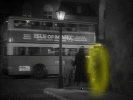
Cast and Crew
Directed by:
Starring:
- Leslie Banks - Bob Lawrence
- Edna Best - Jill Lawrence
- Peter Lorre - Abbott
- Frank Vosper - Ramon Levine
- Hugh Wakefield - Clive
- Nova Pilbeam - Betty Lawrence
- Pierre Fresnay - Louis Bernard
- Cicely Oates - Nurse Agnes
- D A Clarke-Smith - Binstead
- George Curzon - Gibson
- Frank Atkinson - Policeman Shot Behind Mattress
- Clare Greet - Mrs Sprocket
- Joan Harrison - Secretary
Produced by:
- Ivor Montagu - associate producer
- Michael Balcon
Written by:
Photographed by:
Edited by:
Music by:
- Arthur Benjamin
- Louis Levy - musical director
Notes & References
- ↑ Wikipedia: Bulldog Drummond
- ↑ Alfred Hitchcock and the British Cinema (2000) by Tom Ryall, page 117
- ↑ MacGuffin Web Site: Charles Bennett's unpublished memoirs
- ↑ The Alfred Hitchcock Story (1999) by Ken Mogg, page 44
- ↑ Wikipedia: Lindbergh kidnapping
- ↑ Hitchcock purchased the story for £250 and then sold it to Balcon for £500. Hitchcock later regretted profiting from the purchase and commissioned sculptor Jacob Epstein to make a bust of Balcon with the money.
- ↑ Alfred Hitchcock: A Life in Darkness and Light (2003) by Patrick McGilligan, pages 153 & 156
- ↑ The Man Who Knew Too Much was released at the same time in England as the American film Bulldog Drummond Strikes Back, starring Ronald Coleman and Loretta Young, and directed by Roy Del Ruth.
- ↑ Alfred Hitchcock: A Life in Darkness and Light (2003) by Patrick McGilligan, pages 156-7
- ↑ Sight and Sound (1980) - Working with Hitchcock
- ↑ Wikipedia: The Man Who Knew Too Much (book)
- ↑ Wikipedia: Siege of Sidney Street
- ↑ Hitchcock (1967) by François Truffaut, page 90
- ↑ 14.0 14.1 Hitchcock (1967) by François Truffaut, page 91
- ↑ See Backstory 1: Interviews with Screenwriters of Hollywood's Golden Age (1986) edited by Patrick McGilligan. Bennett's view is also repeated in his memoirs, see Hitchcock's Partner in Suspense: The Life of Screenwriter Charles Bennett, published 2014.
- ↑ Alfred Hitchcock: A Life in Darkness and Light (2003) by Patrick McGilligan, pages 160-1
- ↑ Alfred Hitchcock: A Life in Darkness and Light (2003) by Patrick McGilligan, page 161
- ↑ Alfred Hitchcock: A Life in Darkness and Light (2003) by Patrick McGilligan, pages 161-2
- ↑ 19.0 19.1 19.2 The Encyclopedia of Alfred Hitchcock (2002) by Thomas M. Leitch, page 195
- ↑ Alfred Hitchcock: A Life in Darkness and Light (2003) by Patrick McGilligan, page 164
- ↑ Alfred Hitchcock: A Life in Darkness and Light (2003) by Patrick McGilligan, pages 165-6
- ↑ It's Only a Movie: Revisiting “The Man Who Knew Too Much” (1934) cameo (30/Jul/2014)
- ↑ Alfred Hitchcock: A Life in Darkness and Light (2003) by Patrick McGilligan, page 160
- ↑ Alfred Hitchcock: A Life in Darkness and Light (2003) by Patrick McGilligan, pages 168-9
- ↑ Hitchcock (1967) by François Truffaut, page 87
- ↑ BFI Monthly Film Bulletin (Jan/1935) - The Man Who Knew Too Much
- ↑ The Times (10/Dec/1934) - New films in London: The Man Who Knew Too Much
- ↑ The Alfred Hitchcock Story (1999) by Ken Mogg, page 44
- ↑ The Dark Side of Genius: The Life of Alfred Hitchcock (1983) by Donald Spoto, page 144
- ↑ Harrison's Reports (1935) - The Man Who Knew Too Much
- ↑ The Times (24/Jan/1935) - Best English Film of 1934: Gold medal awarded to Mr. A. Hitchcock
- ↑ Alfred Hitchcock: A Life in Darkness and Light (2003) by Patrick McGilligan, page 158
| Hitchcock's Major Films | |
| 1920s | The Pleasure Garden · The Mountain Eagle · The Lodger · Downhill · Easy Virtue · The Ring · The Farmer's Wife · Champagne · The Manxman · Blackmail |
| 1930s | Juno and the Paycock · Murder! · The Skin Game · Rich and Strange · Number Seventeen · Waltzes from Vienna · The Man Who Knew Too Much · The 39 Steps · Secret Agent · Sabotage · Young and Innocent · The Lady Vanishes · Jamaica Inn |
| 1940s | Rebecca · Foreign Correspondent · Mr and Mrs Smith · Suspicion · Saboteur · Shadow of a Doubt · Lifeboat · Spellbound · Notorious · The Paradine Case · Rope · Under Capricorn |
| 1950s | Stage Fright · Strangers on a Train · I Confess · Dial M for Murder · Rear Window · To Catch a Thief · The Trouble with Harry · The Man Who Knew Too Much · The Wrong Man · Vertigo · North by Northwest |
| 1960s | Psycho · The Birds · Marnie · Torn Curtain · Topaz |
| 1970s | Frenzy · Family Plot |
| view full filmography | |
